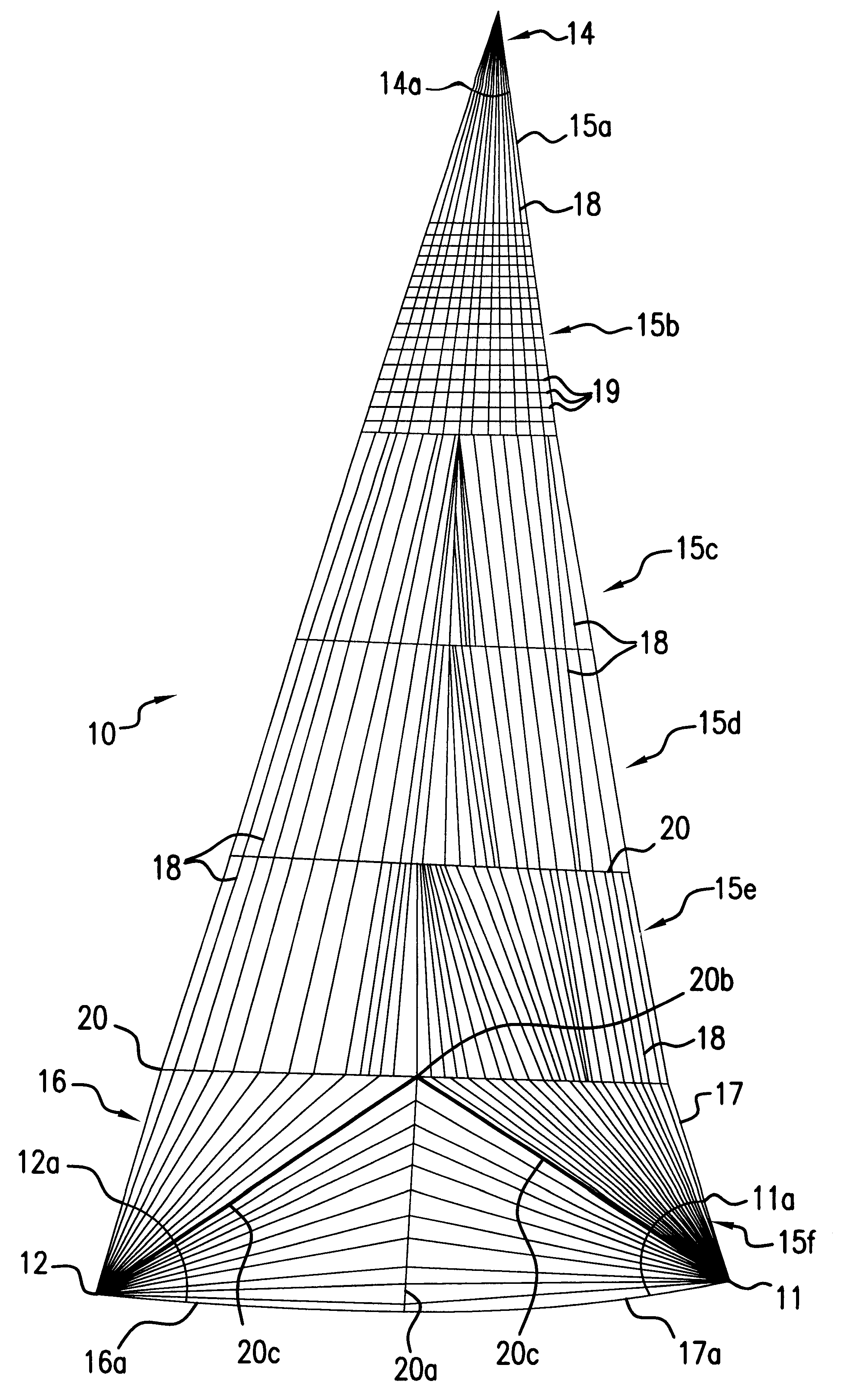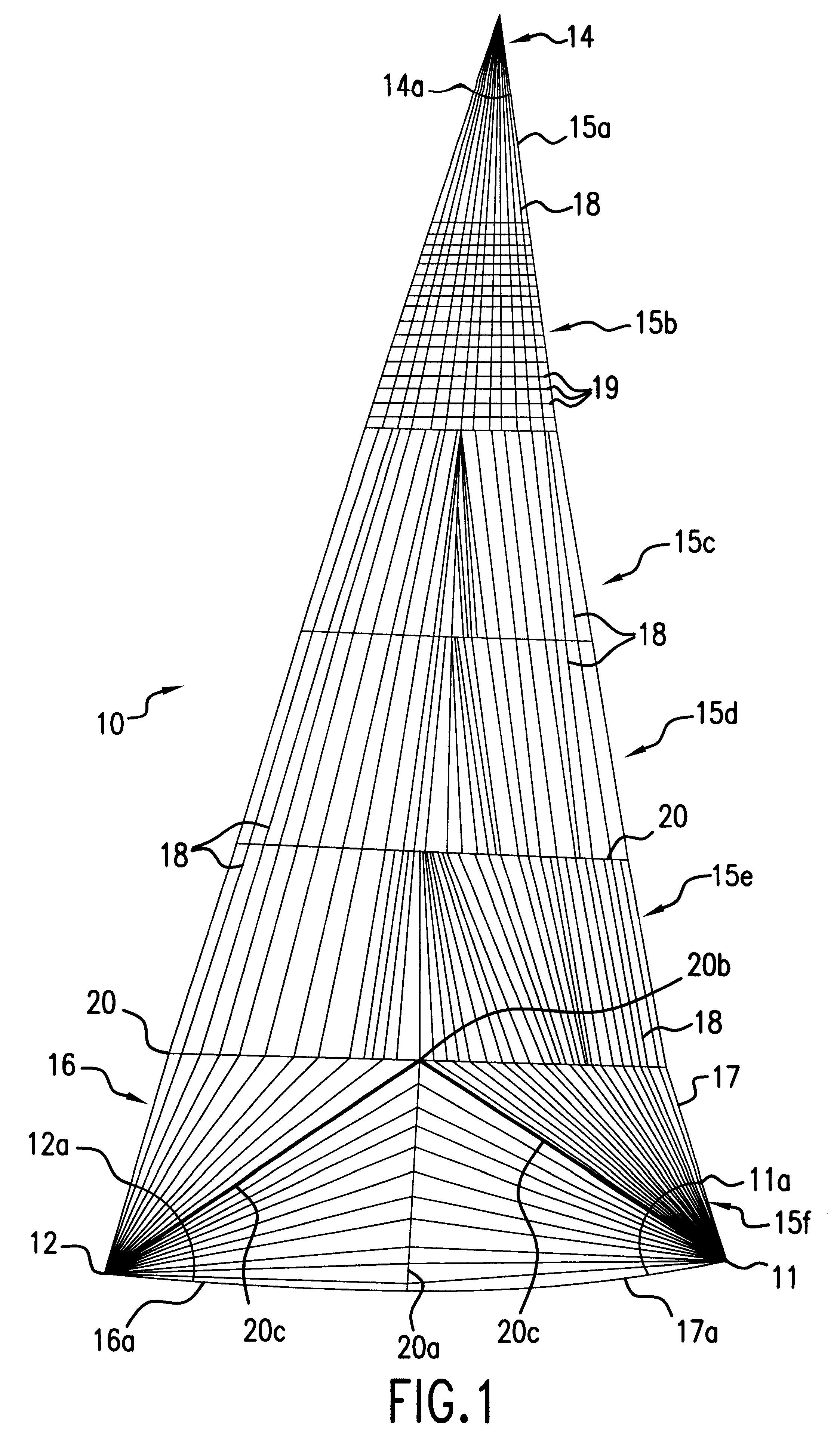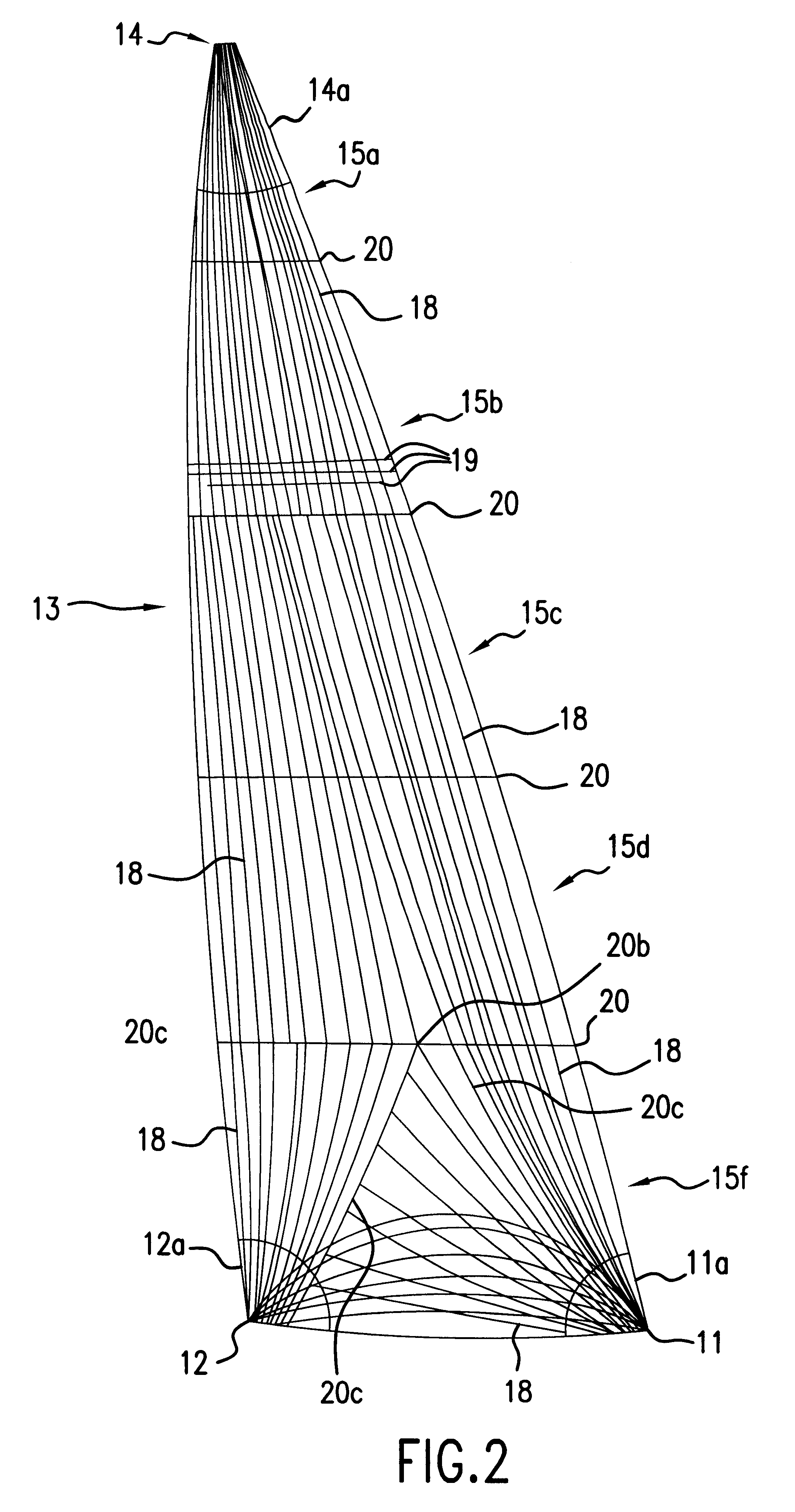Woven fiber-oriented sails and sail material therefor
- Summary
- Abstract
- Description
- Claims
- Application Information
AI Technical Summary
Benefits of technology
Problems solved by technology
Method used
Image
Examples
Embodiment Construction
With reference to the drawings where like elements have been identified by the same numbers in the figures, FIG. 1 herein shows a typical genoa 10 also called a jib sail. Genoa sail 10 has a clew 11, tack 12, and a head 14. On the right side of the sail 10, between clew 11 and head 14 is an indefinite width area called a leach (not identified by a number). On the left-hand side of the sail 10, between tack 12 and head 14, is an indefinite width area called a luff (not identified by a number). Above and below an imaginary line between tack 12 and clew 11, is again an indefinite size area called the foot (not identified by a number). Typically, the luff and leach areas may be considered about one third the size of the panel in the horizontal direction.
In FIG. 1, the panels in the sails have been shown as 15a to 15f. Foot panel 15f consists of four sub panels 16, 16a, 17, and 17a respectively. These sub panels are indicated by the seam 20, the center seam 20a, the seam point 20b and th...
PUM
| Property | Measurement | Unit |
|---|---|---|
| Angle | aaaaa | aaaaa |
| Density | aaaaa | aaaaa |
| Tenacity | aaaaa | aaaaa |
Abstract
Description
Claims
Application Information
 Login to View More
Login to View More - R&D
- Intellectual Property
- Life Sciences
- Materials
- Tech Scout
- Unparalleled Data Quality
- Higher Quality Content
- 60% Fewer Hallucinations
Browse by: Latest US Patents, China's latest patents, Technical Efficacy Thesaurus, Application Domain, Technology Topic, Popular Technical Reports.
© 2025 PatSnap. All rights reserved.Legal|Privacy policy|Modern Slavery Act Transparency Statement|Sitemap|About US| Contact US: help@patsnap.com



